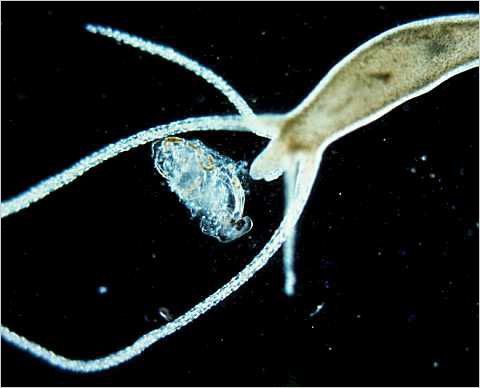The importance of the digestion and metabolism for living organisms is difficult to overestimate. After all, existence without it is simply impossible. In our article, we will consider in detail the essence of these processes, structural features and types of digestive systems in various groups of animals.
What is a metabolism?
Nutrition is one of the main signs of all living things along with breathing, movement, reproduction and the ability to adapt. The functions of the digestive system, first of all, are the implementation of metabolism. They enter the body, are converted, and then excreted from it. This function is performed not only by the digestive system. For example, due to the activity of the respiratory system, oxygen is supplied to all cells of the body, and carbon dioxide is released.
Digestive system
In the digestive system, proteins, carbohydrates, lipids, mineral salts, water and vitamins, which are part of various products, are subjected to mechanical and chemical effects. This happens because the body is not able to absorb them unchanged. Therefore, all substances in the digestive tract are broken down into smaller ones, absorbed into the blood and absorbed. As a result, the body receives the energy necessary for the implementation of all life processes.
Is life possible without the digestive system?
At first glance, such a question may seem rather strange. But there are animals that do not need to break down nutrients. They get them ready-made. These are primarily parasitic worms. They live in the ducts of the intestines of animals and humans. For example, a representative of the class Tapeworms - bovine tapeworm, absorbs nutrients through the integument. Moreover, it causes significant harm to the host, poisoning it with excretory products.
Types of digestive system
The digestive system can be of several types. It depends on the method of nutrition. Most animals have an end-to-end digestive system. It is represented by a tube of various lengths, opening at both ends. So, in mammals, it is represented by the oral cavity, pharynx, esophagus, stomach, intestines and anus, through which undigested food remains are released. A blindly closed digestive system is present for all representatives of the type of enteric. How is it arranged?
Closed digestive system
The scheme of the digestive system of a closed type is simpler. This is the oral opening and intestinal cavity. The undigested food remnants exit through the mouth. The hydra, jellyfish and polyps have a blindly closed digestive system. They lead a different lifestyle. But the structure of this system of organs is associated with the method of nutrition. All of them are predators. The tentacles, on which there are special stinging cells , help them hunt . They consist of a capsule and a sharp twisted thread that ends with a sharp needle. A sensitive hair is located on the surface of such cells. When it touches the victim’s body, the stinging thread reflexively unwinds and digs into the prey’s body, paralyzing it. If you have ever felt the burns of jellyfish on yourself , then it is easy for you to imagine the effect of these formations. When producing food, stinging threads die immediately and can no longer fulfill their functions. And new ones are formed using another type of cell - educational.
Type Intestinal
All representatives of this systematic unit of animals have an intestinal cavity. With this feature of the structure their name is connected. A blindly closed digestive system is primarily freshwater hydra. They lead an attached lifestyle. Their sole is statically on the substrate, and on the opposite side of the body is the mouth opening. It is surrounded by tentacles that serve to catch prey. These are small crustaceans, insect larvae, small fish. Once with the tentacles inside the intestinal cavity, the food is exposed to the action of enzymes that are produced by specialized glandular cells. Under the influence of these biological catalysts, it breaks up into small pieces. Further, the process continues in the digestive cells of the inner wall of the hydra, which have pseudopods. Digestion in special vacuoles is completed. And the remains of substances are released out through the mouth opening. Similarly, this occurs both in jellyfish and in polyps that have a closed digestive system.

Type Flatworms
All representatives of the Flatworm type also have a blindly closed digestive system . It is represented by the front and middle intestines, which ends blindly. Both for absorption and for excretion of food, the mouth opening serves. Despite the fact that flatworms have earned the glory of the most dangerous parasites of humans and animals, among them there are free-living species. These include marine and freshwater planarians. In the aquatic environment, they prey on hydras, small crustaceans, mollusks and insect larvae. Moreover, they capture the production in an unusual way. Planaria crawl onto the victim’s body, protrude the proboscis through the mouth opening and suck all the contents from the victim with it. This is possible thanks to another unusual structural feature. The fact is that the oral opening of free-living flatworms is located on their abdominal cavity.

So, the structure of the digestive system primarily depends on the way animals are fed. Both intestinal and flatworms, which live in salt and fresh water, are predators. Their digestive system is blindly closed and is a cavity or tube with a single specialized opening through which food enters and stands out after conversion.